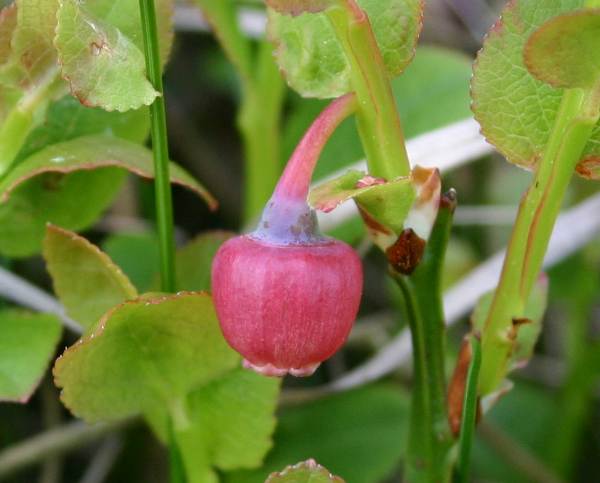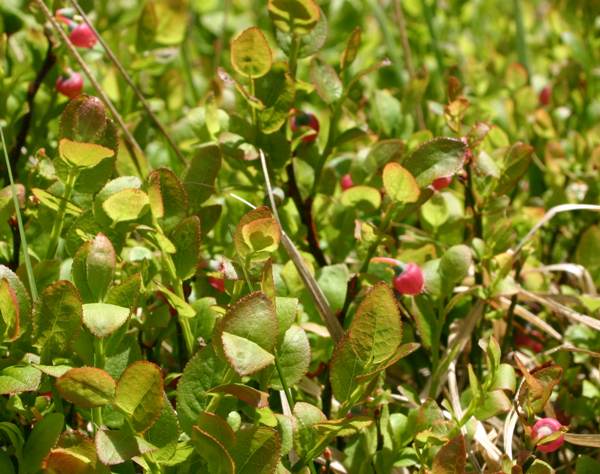Vaccinium myrtillus - Bilberry
Phylum: Magnoliophyta - Class: Equisetopsida - Order: Ericales - Family: Ericaceae

With its bold bright red flowers, this is one of the most distinctive of heathland wildflowers. Bees and many other insects are attracted to the nectar-rich flowers of Bilberries.
Description
Bilberry plants, which are deciduous and generally grow to a height of about 50 cm, have pale to mid-green oval leaves with very finely-toothed margins and short stalks. The globular flowers, typically 5 mm across, are drooping and borne singly along the stems. Ripe Bilberry fruits are blackish purple and typically 6 to 9 mm across, and they have reddish inner flesh; this feature readily differentiates European Bilberry from its North American lookalike relative the Blueberry, which has white or translucent flesh. Even in Britain the name 'Blueberry' is sometimes applies to Vaccinium myrtillus, which only adds to the confusion. Other common names for the Bilberry include Whinberry, Whortleberry, Huckleberry, and Blaeberry (the latter being often used in Scotland).
Habitat
This low-growing species prefers drier heaths and acid wood; it is often the dominant understory plant in upland mixed woodlands.

Distribution
Bilberry is a plentiful species throughout much of the UK except for the Midlands and south-east England, where more alkaline soils tend to dominate. This member of the family ericaceae is native to northern and central Europe and is also found across most of northern Asia.
Flowering times
The first flowers of Bilberry appear in April, and the plants continue to bloom until July, depending on altitude and exposure.

Uses
Bilberries have been used medicinally for at least 1000 years, and they are reputed to be an effective treatment for stomach disorders and for diabetes. Either raw or cooked the berries are good to eat and particularly popular for use in tarts or for inclusion in muffins. Bilberries have also been used as a source of purple dye.

The Bilberry plants shown on this page were photographed between May and August in Wales.
Sue Parker's latest ebook is a revised and enlarged second edition of the acclaimed Wildflowers in the Algarve - an introductory guide. Full details here...
Buy it for just £3.95 on Amazon...
Please Help Us: If you have found this information interesting and useful, please consider helping to keep First Nature online by making a small donation towards the web hosting and internet costs.
Any donations over and above the essential running costs will help support the conservation work of Plantlife, the Rivers Trust and charitable botanic gardens - as do author royalties and publisher proceeds from books by Pat and Sue.



